Ned Breslin: the story of a remarkable man
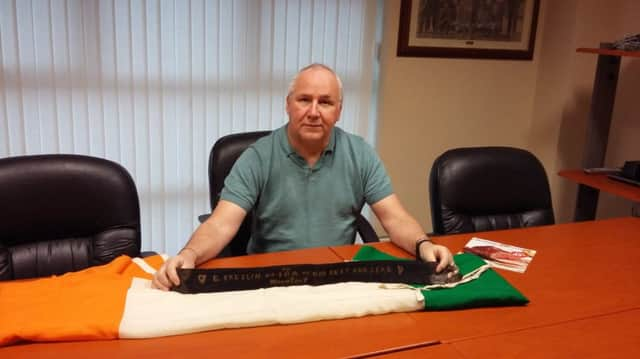

He was a man who remained loyal to Michael Collins until the day he died.
Derry man Ned Breslin was sentenced to death by the British in 1921 for his role in burning down Dublin’s Custom House during the Irish War of Independence. His story has been told in various forms as a result of his infamous role in the ‘Ballyseedy Massacre’ of 1923.
Advertisement
Hide AdAdvertisement
Hide AdBut, now, his grand nephew, GERRY CASSIDY, has uncovered more of the fascinating story of the man who was born Edmund Joseph Columba at Long Tower Street in 1898. This week he spoke to ‘Journal’ reporter, ERIN HUTCHEON.
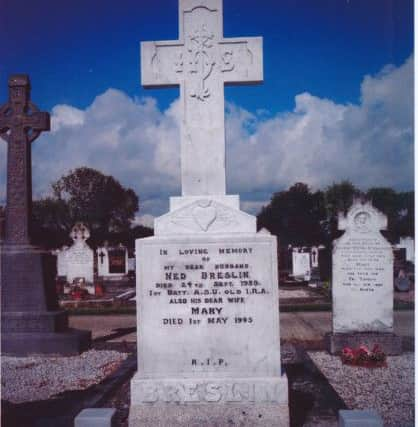

Gerry Cassidy carefully removes a slightly yellowing Tricolour from his briefcase. Along with it is a belt, slightly frayed. This, he says, was the Tricolour that was draped on Ned Breslin’s coffin.
“The belt had been presented to him by prisoners in Mountjoy Jail when he was sentenced to death in 1921. The belt and flag were given to me by Ned Breslin’s son,” he reveals.
Since his retirement, Gerry’s made it his life’s ambition to uncover the full story of his grand uncle - a man who mysteriously left Derry for Dublin and rose rapidly through the ranks of Michael Collins’ infamous ‘Squad’. A man whose name would, forever, be linked with Ballyseedy in Co. Kerry.
Advertisement
Hide AdAdvertisement
Hide Ad“The mystery we have never been able to resolve is how and why Ned went to Dublin,” says Gerry. “It’s a mystery we hope to solve when the military archives in Dublin are fully digitised.”
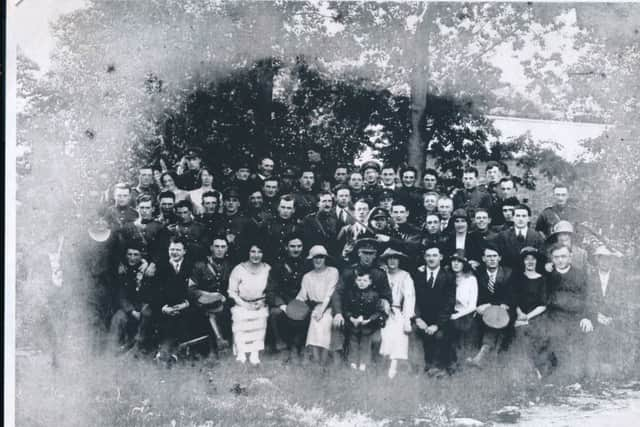

Growing up, Gerry knew a few facts about the famous Ned Breslin.
“I knew there was an incident involving him, but I didn’t know what the incident was,” says Gerry. “I decided to start some family research and my first pieces of information came from my uncle, Daniel, in Letterkenny.
“I knew him as Edmund but Daniel called him ‘Ned’,” explains Gerry. “I remember reading one or two articles where a Ned Breslin was referred to and I thought to myself: ‘I wonder if that’s the same Ned Breslin that was part of Michael Collins’ Squad’?’ Daniel told me it was the same guy, and that shook me, because I had no idea that it was the same man.”
Advertisement
Hide AdAdvertisement
Hide AdGerry’s research has revealed Ned was in the IRA’s Dublin Active Service Unit, brought in when the second squad was set up and Dan Breen was sent to Tipperary
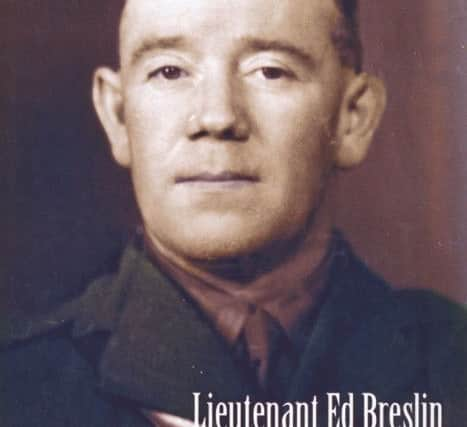

“I’ve been to the military archives to see Ned’s file with the permission of his son Edward, and, for a man who was involved in so much, there is very little to see in his file,” says Gerry. This is because, when De Valera came to power in 1932, many of the files were burned.
“Ned’s son told me that, when his father was caught at the burning of the Custom House, he had two guns on him, but he threw them into the fire. Ned was captured at the Custom House that day and, unfortunately, when he was searched, a bullet was found in the lining of his jacket”.
Most of those captured at the Custom House were taken to Kilmainham Jail, but Ned was taken to Mountjoy. Witness statements report that he received a “terrible hiding” - it’s even been suggested he had his fingernails pulled out.
Advertisement
Hide AdAdvertisement
Hide Ad“Ned was sentenced to death,” says Gerry. “It was the signing of the Treaty that saved his life because, in negotiations, Michael Collins issued an ultimatum that there were to be no more executions. Ned was then released.”
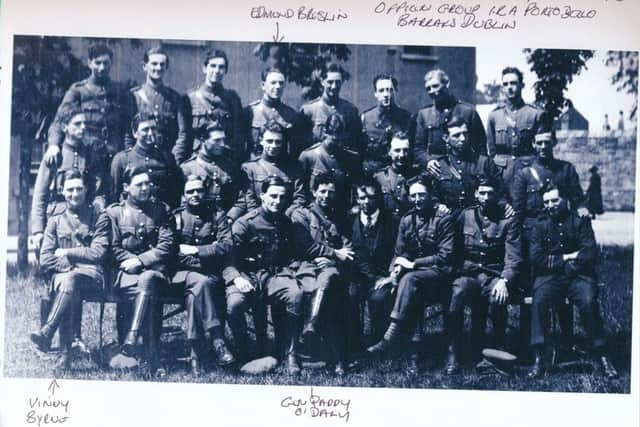

Gerry says that to be in the active service unit of Michael Collins’ ‘Squad’, you had to be “the best of the best”.
“Ned was fiercely loyal to Michael Collins,” he says. “And, when the Treaty was signed, he sided with Collins.
“One of the first things that Michael Collins asked for was a base for his new Dublin guard and where he was going to form a legitimate battalion.
Advertisement
Hide AdAdvertisement
Hide Ad“Ned was a soldier and within 3-4 months rose through the ranks quickly to become a commandant.”
In 1923, as the civil war continued, Ned was transferred to Kerry alongside Paddy O’Daly and the Dublin Squad. Kerry was a place the ‘Irregulars’ and anti-treaty forces were active.
“They were sent for a purpose,” says Gerry. “Paddy O’Daly, being Michael Collins’ trusted right hand man, was put in charge of Kerry.


“Just before Ballyseedy, there was an incident at a place called Knocknagoshel where five of the Dublin Guard were lured into a booby trap set by the Irregulars. The story put about at the time was that the Irregulars were out to get a guy called O’Connor who was thought to have tortured Irregular soldiers. Two of the Dublin Squad blown up that night were part of the active service unit and friends of Paddy O’Daly and Ned Breslin.
Advertisement
Hide AdAdvertisement
Hide Ad“Paddy O’Daly sent a message to headquarters to tell of the terrible tragedy - five men blown to pieces and one with his legs blown off.
“O’Daly issued an instruction that night that, if any of the Dublin Guard came across a landmine or anything that looked like a landmine, then they would go to the nearest barracks and pick Irregular prisoners and get them to move it. Paddy O’Daly said he would discipline any officer who did not obey that command. The following night, Ballyseedy took place.”
The thorny issue of exactly what happened at Ballyseedy encompasses two stories - that put about by the government at the time and the second by the Irregulars.
“The story was that the unit was coming back to the barracks when they saw rubble in the middle of Ballyseedy Bridge,” says Gerry. “I have the court of enquiry papers where Captain Breslin gives his own account.
Advertisement
Hide AdAdvertisement
Hide Ad“Paddy O’Daly told them to go to the nearby barracks and get nine prisoners to move it. Captain Breslin was the man in charge of transport at Kerry. He was the officer who went to the barracks and took the men to Ballyseedy. During the removal of the landmine, it exploded and eight of the prisoners were killed. One of the men survived.
“The man who survived was Stephen Fuller. Ned Breslin and another captain were injured but survived.”
However, Gerry explains, the day after Ballyseedy, the story started to change.
“The story was that these men were deliberately tied together and the landmine was blown up. Ned’s name became so prominent because a report was sent to headquarters saying he and the other captain had been injured - putting his name in the public domain within hours.”
Advertisement
Hide AdAdvertisement
Hide AdHowever, the story of Ned Breslin doesn’t end with Ballyseedy.
Ned married Mary Slattery - ‘Mary from Kerry’, as she was known. Strangely, Mary’s sister married the brother of one of the men blown up at Ballyseedy.
At their wedding, Tom Flood was best man.
Gerry explains that Ned’s relationship with Flood went back years to when they had been together on numerous operations. Ned once saved Tom’s life on the streets of Dublin when he pushed Tom into a bar, saving him from an ambush of soldiers sent in to engage the IRA.
Ned was again to take centre stage during the army mutiny of 1923, led by Liam Tobin.
Advertisement
Hide AdAdvertisement
Hide Ad“The mutiny was led by Liam Tobin; those who took part became affectionately known as ‘Tobinites’,” says Gerry. “Apparently they had taken over a barracks in Dublin as part of the mutiny. The mutiny centred on the new Free State government under Cosgrave and O’Higgins who decided they were going to downsize the Irish Army because it had grown too big.
“They decided they wanted to get rid of 20,000 men. The first thing they decided to do was target all the men who were in Michael Collins’ Squad because they believed there was a lack of discipline. They believed they had come up through irregular ranks and weren’t fit to be officers in the new scheme of things.
“There was a stand-off and negotiations started. It got very tetchy and there was a big fear another civil war would break out.
“It got to the point where they had sent for General Mulcahy who got soldiers loyal to him out to arrest the mutineers. But they escaped out the back. One man was put on top of the building with a machine gun to keep them at bay and it is alleged that it was Ned Breslin who was put in charge of the machine gun.
Advertisement
Hide AdAdvertisement
Hide Ad“But the mutiny took place for other reasons, too. When the Treaty had been signed, Michael Collins had said it was a stepping stone towards a united Ireland and that he would arm and train the IRA batallions in the north and make Northern Ireland ungovernable. All those loyal to him accepted that this was going to happen.
“Cosgrave and O’Higgins, when Collins died, decided that this was not what they were about. So they set about taking on Collins’ ex-men to get them out because they believed that’s what the next stage in their operations was going to be about. That, then, led to the mutiny. It was resolved when it was decided that all the main people would resign en masse - Paddy O’Daly, Joe Leonard, and Ned Breslin. So, rather than stay in what they believed was a betrayal of Michael Collins ideals, all the people who did the dirty work resigned from the National Army. They all agreed to do it properly and never let themselves down.”
Gerry says that, looking back, Ned was at the centre of all the major events of the early part of the 20th century in Ireland apart from the 1916 Rising.”
He was recommissoned back into the Irish Army in 1940. He was thought highly enough of to be brought back in during the “Emergency” - as WWII was referred to by the Irish Government.
Advertisement
Hide AdAdvertisement
Hide AdNed, who was a father of five, died in 1959 and is buried in Ballygriffin Cemetery.
His loyalty to Michael Collins remained so steadfast that, following his death, his wife found among his most precious possessions four books which had belonged to ‘The Big Fellow” himself.